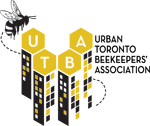Pollinators
Whether you are a beekeeper, or just a fan of bees, creating environments to support pollinators is fun, rewarding and an important part of supporting our ecosystems. Here are some tips and tricks to planning and sustaining bee friendly spaces.
Do No Harm
Ensure you do no harm in your efforts to help. Over half of the “bee friendly” plants marketed in garden centers contain neonicotinoids – which have been proven to be a significant cause of the crisis of native and honeybee populations. * Nurseries like Sheridan, Lost Horizons, and Fiesta Farms (except for hanging baskets), carry plants that are neonicotinoid free.
Consider your space
Consider the space you have to work with. If you have a balcony, a few pots of friendly plants will provide a welcome retreat for visiting bees. If you have a front or backyard, consider creating a mini-habitat instead of just a garden. Native bees like to nest in or under dead wood or trees, or under bare earth, rocks or clumps of grass. Leaving your space natural not only looks great, and takes less work, but also will help create a great habitat for pollinators.
Limited space
If you plant on a balcony and have limited space – consider planting annuals or herbs (which flower continuously). Alyssum, Borage, Water Mint, and Pot Marigolds are good choices.
Water is life
Create a Bee Bar by putting some river rocks or stones in a bowl of water, ensuring the water doesn’t cover all the rocks and leave it outside.
Plant perennials year-round
If you have a yard, you can stagger perennials to ensure food sources throughout spring, summer and fall.
SPRING:
Native plants like Dandylion will volunteer in your garden – make a wish and spread the seeds! Flowering trees like Apple, Hawthorn, Lilac and Chokecherry make a gorgeous spring display and provide valuable food when bees are hungry from winter.
SUMMER:
Get rid of the lawn and plant Clover – no mowing, watering, pesticides or fuss. Explorer series roses grow into tall bushes covered with roses in early summer –John Cabot or Martin Frobisher. Echinops, Echinacea (Coneflower), Monarda (Bee Balm), and Buddleia (Butterfly Bush) and Hyssop, will have your furry friends buzzing with joy. Milkweed and Butterfly Weed are enjoyed by monarchs as well as bees. Cherry tomatoes ripen fast and provide more blooms than slicing tomatoes. Pumpkin and Squashes are needed by highly specialised hoary squash bees.
FALL:
This is a critical time to build up food stores for the winter. Goldenrod is great for native bees and does not cause allergies unlike ragweed which looks similar. Sedum and New English Aster are also important plants for fall.
INVESTIGATE: When you visit a nursery, notice who the bees are visiting. They’ll let you know what they like. If you notice an aster that has fifty bees on it – give it a shake and bring it home! Just be sure to leave your car windows open in case you pick up a hitchhiker.
Recommended Resources
Creating a woodland garden - http://www.creditvalleyca.ca/wp-content/uploads/2012/05/11-281-residentialwoodland-booklet-web-singlepages.pdf
Creating a prairie garden (great for hot dry summers) - http://www.creditvalleyca.ca/wp-content/uploads/2015/05/21310-prairie-and-meadowweb.pdf
A Land Owner’s Guide to Conserving Native Pollinators in Ontario http://www.feedthebees.org/wp-content/uploads/2013/03/A-Landowners-Guide-to-Conserving-Native-Pollinators-in-Ontario.pdf
Pollinator Plant Guide for Toronto http://torontobotanicalgarden.ca/wp-content/uploads/2015/04/2015-Pollinator-Plant-guide.pdf
City of Toronto Pollinator Strategy
